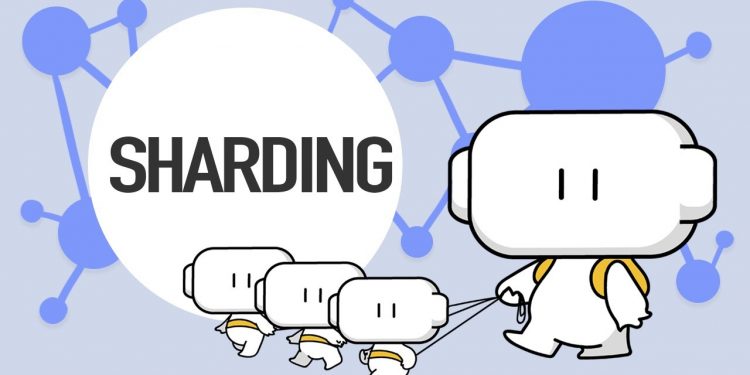Advertisement
What is sharding?
In the cryptocurrency world, especially in Ethereum, Sharding can reduce network congestion as well as increase Transactions Per Second through the creation of new chains, known as shards. Basically, sharding can be understood as a part of a blockchain network that has been divided into many pieces, each with its own data.
Sharding can be done through the process of dividing the database horizontally for distribution. Fragments are conceptualized based on their characteristics, as a shard can be responsible for storing the state and transaction history of a particular address. It is also possible to split shards based on the type of digital assets stored in them.
Transactions involving a digital asset can be done through the combination of shards. Furthermore, each shard can be shared among other shards and this maintains an important aspect of blockchain technology, which is the existence of a decentralized ledger. The ledger remains accessible to all users and allows them to view the status of all transactions.
When sharding is done properly in a blockchain like Ethereum, each user can only store part of the history of changes to the database, as opposed to the full extent of which is how a blockchain works by default.
Related: What Are The Differences Between Investment And Speculation?
How Sharding Technology Works
Sharding involves breaking down a large database of the same type into multiple databases. Since this creates an algorithm that can be more easily generalized, sharding can be implemented at the application or database level.
Sharding has another name – horizontal partitioning. The term horizontal in this case refers to the traditional layout of the database. A database can be split horizontally, with rows of the same database distributed across multiple nodes, or vertically, with different information in a separate database.
Vertical partitioning involves drawing a logical division in the application’s data. This is usually done at the application level, with a command segment routing the code to the specified database.
Sharding can be done on the same database as the one maintained using distributed ledger technology (DLT). DLT is a database that stores information on multiple servers distributed throughout different locations. With millions of users sending millions of transactions, over time, full Nodes must manage an increasingly larger database.
One of the biggest problems blockchains face is scaling – this refers to being able to increase the number of users and transactions on the network. A network that uses sharding can reduce the burden placed on its nodes, allowing them to operate more efficiently without increasing computing power.

Advantages and disadvantages of Sharding
Advantages of Sharding
Anyone can run a node
Sharding is a good way to scale if you want to keep things decentralized or scale by increasing the size of an existing database. This will make Ethereum less accessible to network validators. With shard chains, validators simply store/run data for the segment they’re authenticating, not the entire network. This speeds things up and significantly reduces hardware requirements.
Increase network engagement
Sharding has the ability to allow you to run Ethereum on a laptop or personal phone. So many people will be able to join or run customers in a fragmented Ethereum. This will increase security because of the more decentralized the network, the smaller the attack surface area.

With lower hardware requirements, sharding will make it easier for you to run your own customers without relying on any intermediary services and be able to run multiple clients at the same time. This can help improve network health by minimizing failure points.
Disadvantages of Sharding
Challenge
Sharding will split Ethereum into a lot of pieces and each piece can do its own thing. As a result, DeFi protocols will tend to focus on the same piece to benefit from coordination. However, this can lead to an increase in gas charges on some pieces.
Since protocols on different pieces want to communicate with each other, they will have to use some interactive protocols, which will be more complicated than interacting between two protocols in the same piece.
Risks
Sharding also brings some potential risks to the network, allowing hackers to destroy a thriving ecosystem by attacking any piece of the network. If a piece is hijacked by a hacker, it can cause a domino effect and negatively affect the token price, to a large number of users and nodes on that piece.
Conclusion
Sharding is the future that enhances Ethereum’s scalability, and sharding will be key to helping the ecosystem support thousands of transactions per second and allow the majority of the world to regularly use the platform at a fraction of the cost.
Related: What is Modular Blockchain? Why is Modular Blockchain considered the future of blockchain?
















